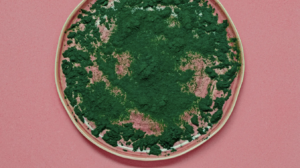3 Incredible Supplements for Optimum Nutrition
Photo of Kelp by Shane Stagner on Unsplash
With all the activities in a day, it can be challenging to find time to shop for wholesome foods, healthily prepare them while trying to provide a variety of food to ensure you are getting all the nutrition needed for you and your family. If you are physically active, your body needs even more nutrition to maintain a balanced metabolism. If you exercise only once in a while, you may eat a snack or two that will help you get through the workout, but probably also contains fat and sugars, which won’t necessarily help you, in the long run, to feed your body sufficiently.
There is a simple way to feed your body when you are pressed for time, are not really hungry but feel you should feed your body something, or control your appetite without diet pills. One answer many people choose is the supplementation of specific plants that are optimal at feeding the body. Three plants that are especially good at feeding the body are alfalfa, kelp, and spirulina.
ALFALFA
Alfalfa is used as animal feed throughout most of the world. In fact, the term alfalfa’s origin has been traced to the Persian word aspasti, meaning “to eat.” Some historians believe that the word was something similar to “alfalfacah”. The word “alfalfa” is most likely an Arabicized Persian term, meaning “horse fodder”.
Over 80 million acres of land are used to grow alfalfa worldwide, with 27 million acres being cultivated in the United States alone. Man has cultivated this popular plant for thousands of years, probably beginning in ancient Armenia about 2000 to 1000 B.C. Introduced to Greece about 490 B.C., it then spread into the rest of Europe and Northern Africa. Spanish explorers brought alfalfa to the New World, and gold prospectors carried it from South America into California. It was also brought to the East and central regions of this country directly from Europe.
A unique characteristic of alfalfa is that it has a deep taproot. It grows in rich soils and sends roots deep into the ground. Ask any farmer who has tried to rotate alfalfa to another crop, and they will tell you about its deep roots system. Because of this, alfalfa is extremely rich in a multitude of vitamins and minerals, including protein (19.9%), Vitamins A, B, C, D, E, K, calcium, fiber, magnesium, niacin, and riboflavin. In fact, alfalfa contains almost every vitamin and mineral known to man.
Many herbalists call alfalfa nature’s multi-vitamin.
Alfalfa is usually compressed into capsules or brewed as a tea. Alfalfa is great for pregnant or lactating women who want to make sure they are getting enough nutrition without eating everything in sight.
Medicinally, alfalfa’s most popular use in Western herbalism is in arthritis formulas, where alfalfa is a principal herb. Other benefits of alfalfa include stimulating menstruation, stimulating milk production in lactating women, assisting with obesity, and lowering cholesterol in some people. Alfalfa may have a diuretic action for some people due to the flavonoids and often has balancing effects on intestinal flora due to the fiber content. The high beta-carotene content of alfalfa acts to strengthen the cells of the stomach’s mucous membranes and could be responsible for its effects on ulcers.
Alfalfa stimulates the body to remove toxins from the blood. Its blood-purifying properties have been attributed to its high chlorophyll content, which may explain its effectiveness for arthritis.
Alfalfa sprouts are good but do not have the same benefits as they have not had time to send that taproot to gather all the nutrients from deep into the soil of the earth.
KELP
Another beneficial plant is kelp. Kelp is brown algae found usually in groups in 10–150 ft. seas. It has large flat, leaf-like fronds that attach to rocks. There are several kelp species native to the Pacific Ocean and the Atlantic coast of North America. Herbalists’ Pacific sea kelp is Fucus vesiculosis and gets its name from the Greek Òphykos, which is a derivative of Òphytein meaning “to grow”, about the plant’s amazing length. The species name vesiculosis is from the Latin Òvesicula, meaning a little vesicle, referring to the air blisters found in the frond.
Kelp is most famous for its use in foods. In the Orient, it is used to flavor soups and sushi. In North America, it is popular as cattle feed also. Kelp is also available compressed into capsules for easy use. The pharmaceutical and confectionery industries use the purified mucilage of kelp (algin) in virtually all classes of products.
Herbalists often use algin to absorb heavy metals out of the body. Algin can be found in lozenges, tablets, facial masks, and in many creams and lotions. It is also used in nearly every gelatin, pudding, ice cream, and cheese products to produce that smooth mouthfeel and rich texture.
Herbalists use kelp as a mineral supplement to absorb toxins from the body and feed the thyroid. It is rich in iodine, calcium, and potassium and is often used to treat hypothyroidism and obesity. It has also been used as a blood purifier to treat atherosclerosis, rheumatism, and treat ulcers. Kelp provides fiber, which provides bulk for bowel movements, which can help treat chronic constipation or soften stools. The potassium salt of algin is useful as a toxin scavenger for the digestive tract and a demulcent and a source of viscous fiber.
Because of the high iodine content, people who are allergic to iodine or injected dyes used for X-Ray studies of the kidney or other organs should consult a professional first.
Photo of Spirulina by FOODISM360 on Unsplash
SPIRULINA
The final nutritious plant, spirulina, is also an algae found in a few alkaline lakes worldwide, the largest in Mexico, Thailand, Japan, Africa, and Southern California. Spirulina is the main food of certain African flamingos and has been eaten by the Kanembu people of Chad for hundreds of years. It was eaten by the Aztecs, who called it techuitlatl and ate it in small cake form. Spirulina has been studied worldwide by scientists as early as the 1940s and has proved wholesome food. In recent times, scientists have investigated spirulina’s potential use in space stations, where it would recycle air and wastes and provide food for the astronauts.
Spirulina contains a multitude of vitamins and minerals. It is especially high in protein (60–70%), containing all amino acids, vitamins A, B-complex and C, beta-carotene, niacin, riboflavin, and thiamine. Typically, 2 capsules contain 12 grams of protein (depending on the brand you purchase). It also contains fiber and chlorophyll — to build red blood cells. Many people like to take this supplement for added energy, curb carbohydrate cravings, and supplement their diet. It is available in powder and tablet forms. Sometimes it is mixed with other popular algae such as chlorella and blue-green algae for even better results.
I have customers who like to sprinkle spirulina over popcorn. I know it sounds strange, but the kids love the green popcorn — and it is good for them.
Spirulina’s other historical uses include acting as an energy booster, treat obesity, used as a tonic, assist with diabetes, reduce cholesterol levels in the blood, and used for AIDS, help treat cocaine addiction, and is especially good for athletes, vegetarians, expectant mothers, and senior citizens. In some developing countries such as Peru and India, spirulina is given to malnourished children as part of health dispensary programs.
Be sure you know the source of these plants or the company you are purchasing these products from. All plants brought into the United States must be fumigated.
Of course, any food grown outdoors is bound to have some contaminants. Some argue that commercially produced plants are purer than those harvested from nature. However, many would argue that energy is also different. You want to make sure the products you are purchasing are processed with the appropriate standards to prevent microbial contamination and are tested for carcinogens and other contaminants.
An example of poor testing is, several years back, Aloe Commodities International of Carrollton, Texas, recalled 1600 bottles of their Solutions IE Ageless Formula II because they contained a “signification higher than the labeled level of Vitamin D3.” The serving size of six capsules actually contained over 470 times more than the label claim of 400 IU! The company discovered the mistake and acknowledged an error in manufacturing after their distribution company, Solutions International, Inc., received three complaints of consumers hospitalized for vitamin D toxicity with hypercalcemia, a potentially dangerous condition.
Like so many companies in the health industry, Solutions International focused only on marketing products, leaving manufacturing, quality control, and raw material sourcing to someone else. They had to rely on ACI’s tests, and it cost them.
Consumer Reports has done several tests on various supplements where many products failed CR tests because the product inside the bottle did not actually have the number of ingredients from what the bottle stated.
Your best bet is to contact a health professional familiar with the products they are recommending. This way they can contact the company for you or give you the information to contact them yourself. Like anything else, but especially with your health, it pays to purchase products from companies you can trust.
I think one of my young customers said it best, “I wish my boyfriend would take supplements and change his diet, but he is saving up for his chemotherapy.” Are you saving up for your chemotherapy? Or are you ready to be healthy today?
As with any food supplement, you will achieve optimal results by using these products with a regular balanced diet. For best results, consult your health practitioner.
So next time you are in a hurry or don’t have time to eat properly, take alfalfa, kelp, or spirulina. Your body will be much happier and healthier.
About the Author
Kasara is educated as a Mental Health Therapist, Master Herbalist, Traditional Naturopath and Energy Worker with over 35 years of helping thousands of clients find alternative health options that work. She writes articles on Medium, and on her website http://truhealth.com. You may subscribe to her Medium account or her newsletter to stay connected.


